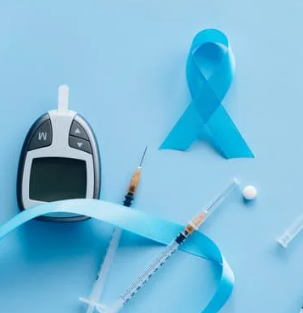With the hustle and bustle of our 2024 Annual User Conference behind us, time has been passing very quickly this Spring here at Azara—and with Spring comes seasonal allergies and pollen, which are just two of the many asthma triggers. Just in time for Asthma Awareness Month, following are ways to use Azara DRVS tools, and data, to improve patient outcomes for those living with asthma
What exactly is asthma?
According to the CDC, asthma is a chronic disease of the lungs [that] affects [adults and children of] all ages. It is characterized by repeated episodes of wheezing, breathlessness, chest tightness, and nighttime or early morning coughing.
Who does asthma affect?
According to the American Lung Association, over 25 million Americans have a diagnosis of asthma. Of these 25 million Americans, 5.5 million are children.
What can we do to combat asthma?
While there is no known cure for asthma and its exact causes are also unknown, patients can identify and avoid things that trigger an asthma attack. Additionally, providers can deliver medical care to these patients to help manage their asthma. If it is not properly managed, asthma can result in frequent emergency department visits, hospitalizations, and premature deaths.
How can data help?
Azara has partnered with the American Lung Association (ALA) through Project BREATHE NY, which is an asthma quality improvement program. Through this program, the ALA provides tools and resources to assist healthcare providers across New York State with managing asthma amongst their pediatric patients. They also provide technical assistance on how to implement the National Asthma Education and Prevention Program (NAEPP) guidelines and self-management tools into everyday practice.
For the purpose of consistent quality improvement efforts, Project BREATHE NY partners are required to submit a monthly data report on a set of asthma measures from DRVS. This information is then submitted to the New York State Department of Health. The goal of Project BREATHE NY is to keep pediatric patients with asthma healthy and out of the hospital—Azara DRVS helps makes it easy to identify patients and enable providers to monitor the difference they are making as they work to improve these patient outcomes.
DRVS offers four core measures that provide the ability to assess the severity of patients’ asthma, identify the use of appropriate medications, ensure there is a documented self-management plan in place, and determine whether an influenza vaccine has been administered for patients with asthma.
Azara and Project BREATHE NY have created several additional measures in DRVS to assist providers, their care teams, and the patients they serve. With these Project BREATHE NY measures, DRVS enables practices to:
- Determine the number of symptom-free days among patients with asthma
- Ensure that patients’ asthma is well controlled
- Assess self-management and self-management education
- Identify referrals made for home-based self-management
- Determine that patients have received trigger education and evaluation
- Determine that patients have received exposure to tobacco education and evaluation, etc.
These measures can be implemented by any practice using DRVS through additional mapping.

For more details about implementing the additional Project BREATHE NY asthma measures, please reach out to your Client Success Manager or the Azara support team.
What are practices doing to improve asthma management with data in DRVS?
At our 2024 Annual User Conference in April, Jennifer McCloskey and Mallory Ohneck of Health Partners of Western Ohio spoke about the custom asthma tools they’ve built within Azara DRVS.
Jennifer and Mallory worked with the team at Azara to create a custom “Asthma Action Plan” alert that fires on the Patient Visit Planning (PVP) report. This alert appears on the PVP if an Asthma Action Plan has not been documented within the last year for any patient with asthma who is at least five years old. In using both this new alert and the Transitions of Care (TOC) module in DRVS, Jennifer and Mallory were able to come to the following conclusion: “The further from an Action Plan start date, the more likely patients were to end up at the hospital.” By addressing overdue Asthma Action Plans directly at the point of care, the care teams at Health Partners of Western Ohio have immediate oversight into which patients are in need. In a two-year span, Health Partners of Western Ohio has increased the percentage of patients with an Asthma Action Plan by 39.8%!

The team at Health Partners of Western Ohio has built other impressive custom asthma tools within DRVS for their organization. To support their custom asthma registry, they created a custom asthma registry data element (RDE) to monitor first line therapy for their patients with a diagnosis of asthma. They also built an asthma-specific custom Care Effectiveness Report in DRVS for their school-based sites and are now capturing the amount of days of school missed due to asthma for the children at their practice.
The tools that Health Partners of Western Ohio have created are available to all DRVS users, and some may require additional mapping. Feel free to reach out the Azara Support Team if you’re interested in the Asthma Action Plan Alert, the First Line Therapy RDE, or the Asthma Care Effectiveness Report.
Additional resources
For more information on the great things that Health Partners of Western Ohio is doing to provide better care for their patients with a diagnosis of asthma, DRVS users can check out their presentation slides from our conference.
Additionally, the American Lung Association is offering four free webinars throughout the month of May in light of Asthma Awareness Month. The webinars will be recorded and accessible on their website in June.
For more information about how one of the practices participating in Project BREATHE NY has utilized DRVS to better manage their patient population with a diagnosis of asthma, check out Azara’s webinar
How about you?
We’d love to hear from you! How is your practice managing your patient population with a diagnosis of asthma? Which stock or custom tools are you utilizing in DRVS? What are your best practices when it comes to asthma? If you have a success story you’d like to share with us, we would love to hear from you.
Related Articles

Value-Based Care Foundations Part 2: A New Chapter in Risk Adjustment
Explore Insights
Socioeconomic Status, Access, and Control: Rethinking Diabetes Outcomes
Explore Insights
